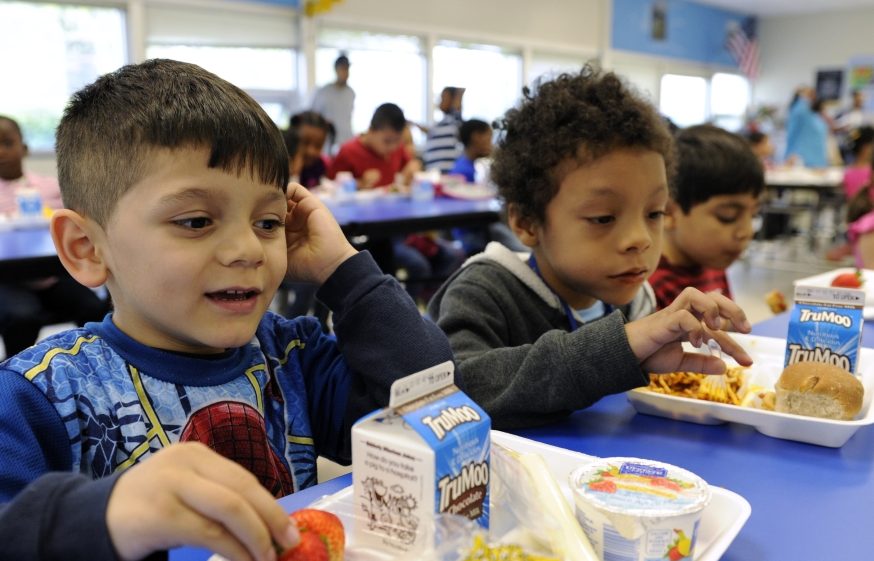Nearly 1 in 5 schoolchildren is obese, nearly triple the percentage of the 1970s. More than 30 million students eat a meal at school, and for many, school-provided food is their best shot at a nutritious meal.
Those are the numbers Congress should keep in mind as the Trump administration begins to roll back the gains made in recent years in bringing healthy, nutritious and plentiful food to students.
Want another number? How about 1,230, the number of milligrams of sodium allowed in an elementary school lunch, more than half the recommended daily intake for an adult?
That number was scheduled to be reduced to 935 milligrams this year, then 640 by 2022, but will hold where it is for now under a recent order from Sonny Perdue, secretary of the U.S. Department of Agriculture.
The order also brings back federally funded 1 percent and flavored milk to school cafeterias, and allows schools to substitute white flour products for whole grains.
Thankfully, it only slows down, but doesn’t gut, the progress on school nutrition made during the Obama administration. But along with proposed cuts to after-school and summer programs, as well as to the Supplemental Nutrition Assistance Program, or food stamps, there is no doubt that access to plentiful healthy food for low-income families is at risk.
The USDA said the changes are necessary to give local schools flexibility and control. The nutrition standards, the department said, were expensive to meet, and the healthier food was being rejected by students, with a lot of it ending up in the waste can.
It’s true there was some resistance at first – of course students prefer burgers and fries to whole-grain pizza. But we don’t allow students to stop reading a book if they don’t like the first page, and the schools that dedicated themselves to providing healthy meals soon found converts. The latest studies show that the stricter guidelines, in fact, did not lead to more waste, and also increased the amount of healthy food students ate.
School districts as different as Portland and Regional School Unit 3 in rural Waldo County took those guidelines to heart, seeking out locally grown and produced food to make healthy meals, proving that it is possible and cost-effective – and ultimately embraced by students – to offer good food at school.
Those committed districts, and others like them, will likely continue to serve healthier meals. But now that they don’t have to, other districts won’t, leaving students to their own worst instincts in the cafeteria.
That’s a bad idea when childhood obesity is epidemic – kids in large part just aren’t getting enough nutrition. Too many American children start young with a diet high in sodium and sugar, and low in vegetables.
Pick any day, and over a third of children will eat fast food and all kids will get more than 12 percent of their calories from fast food – and that doesn’t even include all the processed and packaged food that make up much of the rest of their diet.
There’s a reason children are suffering the effects of health problems like high blood pressure and cholesterol, and Type 2 diabetes, in ways only seen before in adults.
Processed, malnutritous food is cheap, easy and ubiquitous. It is everywhere, and it is making our children sick.
School meals should provide a break from that onslaught of salt, sugar and fat, and help set habits that will pay off for a lifetime.
Send questions/comments to the editors.


